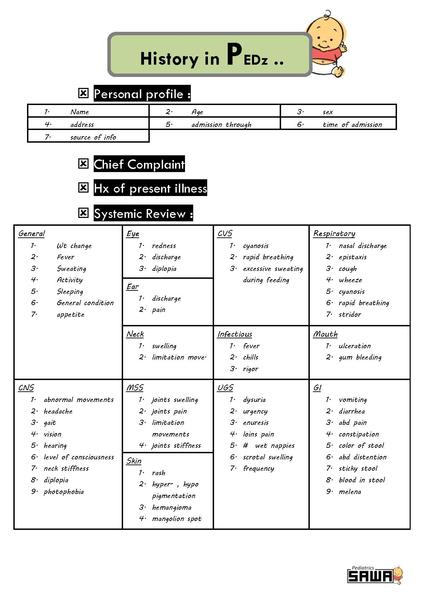1.1
Taking anamnesis
Taking anamnesis from a patient is a skill necessary for any medical professional. It requires good communication skills and knowledge about what to ask. A good way how to present history is to follow the general framework described below.
- Introduce yourself, identify your patient and ask for consent to speak with them.
- Presenting complaint - the patient describes what is wrong. (e.g. abdominal pain)
- History of the complaint - get as much information as possible about the specific complaint. For pain the following questions can be asked:
The SOCRATES acronym can be used for any type of pain history.
- Past medical history - gather information about a patients other medical problems.
- Drug history - what medications the patient is taking, their dosage and frequency of administration.
- Allergies - any patient´s allergies.
- Family history - information about the patients family history, especially diabetes or cardiac history and are any genetic conditions within the family.
- Social history - the patient’s background concerning smoking and alcohol intake or using illegal substances.
- Review of systems - information regarding the other systems in the body.
These are the main systems to be covered:
- Summary of history - review what the patient has told you. Repeat back the important points so that the patient can correct you if there are any misunderstandings or errors. You should also ask what the patient thinks is wrong with them and what they are hoping for from the consultation. ICE – Ideas, Concerns and Expectations.
- Patient questions - After taking the anamnesis, the patient can have questions. Do not provide any false information. If you are not sure of something ask the superior nurse or a doctor.
+

Source: Author madhero88, Medical history, license Creative Commons BY-SA 3.0.
Fig. 2. Medical history.